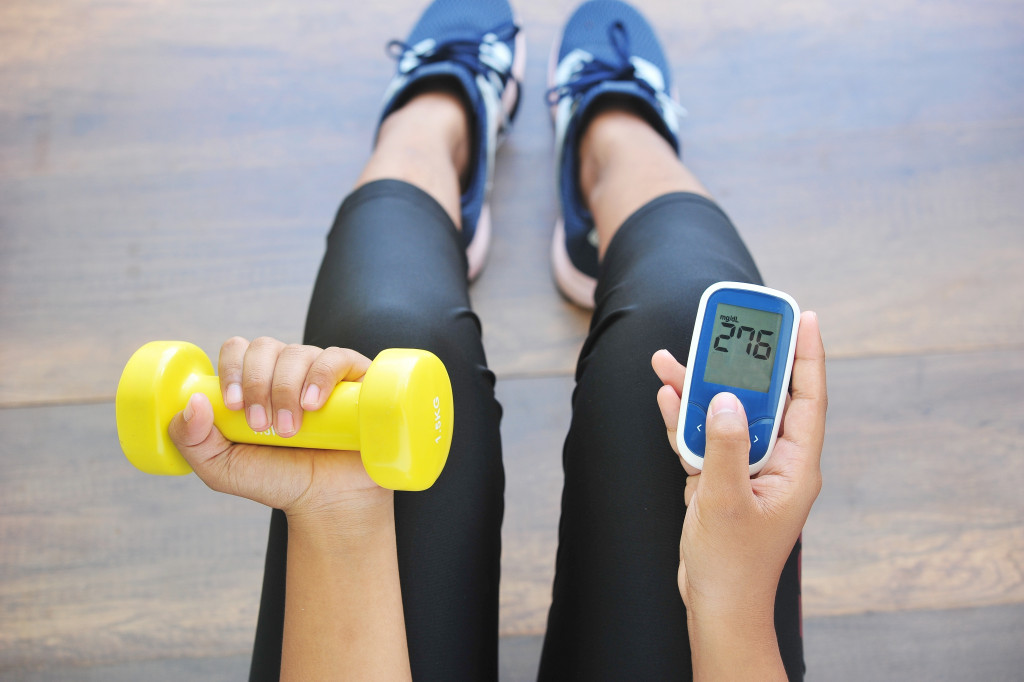• Diabetes affects more than 37 million Americans
• Leading an active lifestyle with diabetes is possible with a doctor’s guidance
• Low-impact exercises and HIIT are beneficial for keeping insulin levels in check
• Aerobic and strength training exercises can help improve glucose control
• Participating in patient-centric studies can provide valuable insight into how to best manage diabetes
Diabetes is a disease that affects more than 37 million Americans. It can make it difficult to lead an active lifestyle due to the complications it can cause. However, with the right strategies, you can stay healthy and active even after being diagnosed with diabetes. If you have diabetes, there are a few specific steps you can take to lead an active lifestyle.
Before exercising, it’s important to take some steps to help ensure your safety while allowing you to get the most out of your exercise routine. Be sure to speak with your doctor before starting any new exercise regimen, and understand all the potential risks. Additionally, check your blood sugar levels before and after exercising to better understand how your body responds to physical activity. Finally, be sure you have adequate hydration and nourishment before exercising.
Types of Exercise for People With Diabetes
Not all exercises are appropriate for people with diabetes. It’s important to find the right type and intensity of exercise that works for you.
Low-Impact Exercises
Low-impact exercises such as walking, swimming, and cycling can benefit people with diabetes because they don’t put too much strain on your body. These physical activities give your body time to adjust to the physical demands while still allowing you to stay active.
High-Intensity Interval Training
Utilizing high-intensity interval training (HIIT) is an efficient way to get the most out of your workout by alternating short bouts of vigorous activity with brief rest periods. This exercise can benefit people with diabetes because it helps build muscle and improve cardiovascular health while not overworking the body. Just remember to perform this safely with the supervision of a trainer.

Aerobic Exercises
Since your body needs to use any available insulin to process glucose, aerobic exercises can benefit people with diabetes. This exercise helps your body use available insulin more efficiently and increases your body’s sensitivity to the hormone. Exercises such as running, jogging, and jumping rope are all good aerobic exercises for people with diabetes.
Strength Training
Strength training is also beneficial if you are into a more intensive workout. It can improve blood sugar control and improve your overall health. You can lift weights, work with resistance bands, or make moves like pushups, lunges, and squats, which use your own body weight. Your strength training program should work your whole body to maximize the benefits of the exercise.
Tips For Staying Active With Diabetes
Staying active after being diagnosed with diabetes doesn’t have to be hard! Here are some tips that will help you stick with your exercise plan:
- Find an activity that you enjoy: If you find an activity that you enjoy doing, it will make it easier to stay motivated. This could be anything from taking a yoga class to playing your favorite sport. Or even something as simple as going for a walk every day.
- Set realistic goals: It’s important to set achievable goals that you can stick with. You can start with small goals, such as walking for 10 minutes daily and gradually increasing your activity level over time.
- Track your progress: Tracking your progress is the perfect way to remain motivated. With a fitness tracker, it’s simple to stay on top of your exercises and establish new objectives for yourself!
- Participate in patient-centric studies: Participating in a patient-centric study can be an effective way to stay active because it allows you to see how different types of exercise affect your diabetes. These studies help researchers learn more about physical activity levels and can provide valuable insight into how to best manage the disease.
- Stay Hydrated: Drinking water before, during, and after exercise is important for anyone with diabetes. It helps keep your body temperature regulated and prevents dehydration.
When to Stop
It’s important to pay attention to your body and know when to stop exercising. It is best to stop and rest if you experience any pain, dizziness, or shortness of breath during exercise. Visit your doctor soon so that you can still stay active and keep your diabetes under control. You may need to take a break if your blood sugar levels are too low or too high, but consider this a much-needed reset.
Maintaining an active lifestyle after being diagnosed with diabetes doesn’t have to be intimidating or difficult! With the right strategies, you can learn how to lead a healthy life even with this chronic condition. With dedication and determination, you, too, can enjoy an active lifestyle even when living with diabetes!
